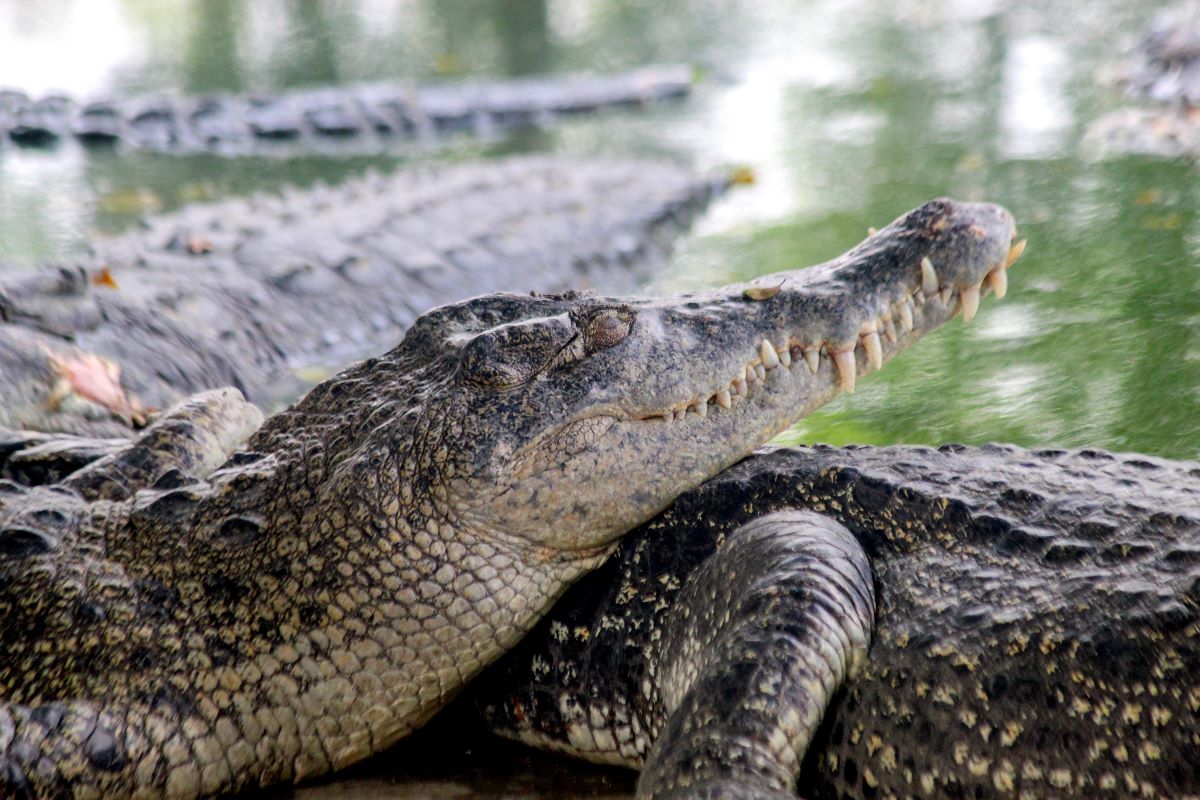Hold onto your hats, folks! An American crocodile just had a virgin birth. No male needed. How’s that for girl power?
Parthenogenesis Unpacked

This incredible phenomenon, called parthenogenesis, allows female animals to reproduce without a male. It’s like a biological backup plan. This was confirmed in a study published in Biology Letters, showing that parthenogenesis can occur even in species where it’s extremely rare.
Not Just Crocs

Birds, fish, and some other reptiles can do it too. Nature always finds a way, doesn’t it? For instance, Komodo dragons and some shark species have also been documented to reproduce this way.
Why Now?

Could it be a response to fewer males around? Maybe. This could be nature’s way of ensuring survival even when mates are scarce. Scientists speculate that environmental stressors or population pressures might trigger this reproductive method.
Mini-Mes

The offspring from these virgin births are genetic clones of their moms. Imagine a whole gang of mini-me crocs! This cloning means the young crocs inherit exactly the same DNA as their mothers, ensuring their genetic line continues.
Survival Strategy

In tough environments, this ability can be a lifesaver, literally. It’s like hitting the reset button on reproduction. Parthenogenesis could help maintain population numbers when males are hard to find.
More Surprises Ahead?

This discovery opens the door to more questions. Could other species be doing this under our noses? Researchers are now looking into other reptiles to see if this phenomenon might be more widespread than previously thought.
Conservation Clues

Understanding parthenogenesis can aid in conserving endangered species, offering new methods for maintaining population numbers. For example, if a species has the ability to reproduce without males, conservation strategies could be adjusted to ensure their survival.
Scientific Curiosity

This discovery has sparked curiosity about what triggers parthenogenesis and how widespread it might be among reptiles. Scientists are eager to explore the genetic and environmental factors that enable this fascinating reproductive strategy.
Historical Context

Parthenogenesis isn’t new, but it’s rare and often unexpected. Historical records show that other reptiles, like certain lizards, have been known to reproduce this way.
Genetic Research

Advanced genetic research is revealing how parthenogenesis works at a molecular level, providing insights into DNA replication and cell division.
Evolutionary Advantages

Parthenogenesis may offer evolutionary advantages in specific contexts, allowing species to survive and thrive even in challenging conditions.
Environmental Impact

Changes in the environment, such as habitat destruction and climate change, might influence the frequency and success of parthenogenesis in certain species.
Behavioral Observations

Observing behavior in species capable of parthenogenesis can provide clues about how this reproductive strategy affects social dynamics and survival rates.
Adaptation and Resilience

Parthenogenesis demonstrates the incredible adaptability and resilience of nature, showing how life can persist and adapt in diverse ways.
Broader Implications

The implications of parthenogenesis extend beyond crocodiles, challenging our understanding of reproduction and survival in the animal kingdom.
Technological Advances

New technologies in genetic and reproductive science are enabling researchers to study parthenogenesis more effectively, leading to potential breakthroughs in biology.
Future Discoveries

The discovery of parthenogenesis in American crocodiles paves the way for future research, potentially uncovering similar capabilities in other species.
Public Fascination

This story captures the public’s imagination, highlighting the wonders and mysteries of nature. It’s a reminder of how much we still have to learn about the natural world.
Media Spotlight

The media attention on this discovery helps raise awareness about the complexity and diversity of reproductive strategies in animals, fostering greater interest in wildlife conservation.
Next Steps

Scientists are eager to conduct further research to understand the mechanisms and implications of parthenogenesis, aiming to apply this knowledge to conservation and biology.
Featured Image Credit: Shutterstock / Navokifaut.
For transparency, this content was partly developed with AI assistance and carefully curated by an experienced editor to be informative and ensure accuracy.





